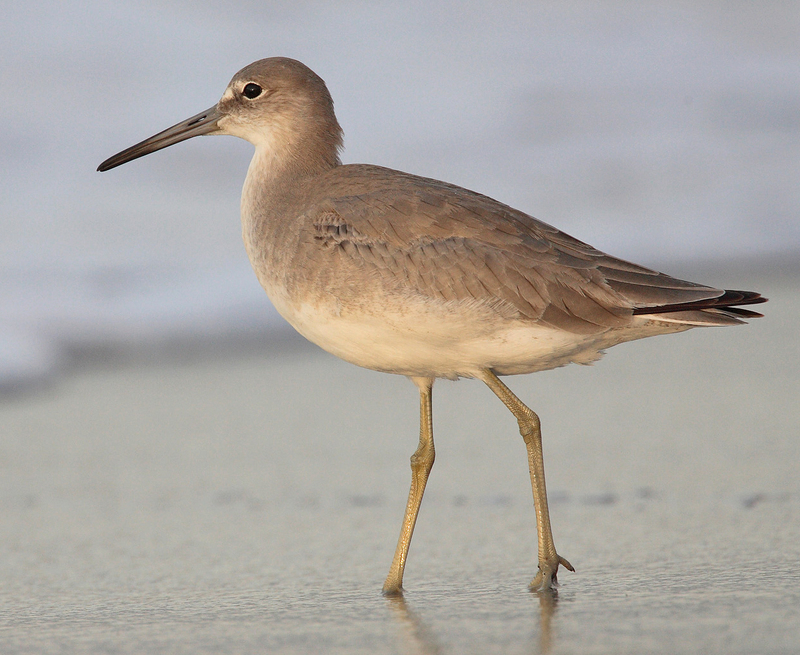Willet (Tringa semipalmata) - Wiki Willet
From Wikipedia, the free encyclopedia
[Photo] Willet (Tringa semipalmata) in Panama. Photo by Mdf (http://en.wikipedia.org/wiki/User:Mdf).
| Permission is granted to copy, distribute and/or modify this document under the terms of the GNU Free Documentation License, Version 1.2 or any later version published by the Free Software Foundation; with no Invariant Sections, no Front-Cover Texts, and no Back-Cover Texts. A copy of the license is included in the section entitled "GNU Free Documentation License". |
The
Willet,
Tringa semipalmata (formerly
Catoptrophorus semipalmatus: Pereira & Baker, 2005; Banks et al., 2006), is a large
shorebird in the sandpiper family. It is a well-sized and stout scolopacid, the largest of the shanks. Its closest relative is the
Lesser Yellowlegs, a much smaller bird with a very different appearance apart from the fine, clear and dense pattern of the neck which both species show in breeding plumage.
Adults have gray legs and a long, straight, dark and stout bill. The body is dark gray above and light underneath. The tail is white with a dark band at the end. The distinctive black and white pattern of the wings is a common sight along many North American coastal beaches.
Two subspecies (which may well be different species) have very different breeding habitats and ranges. The
Eastern Willet breeds in coastal saltmarshes from Nova Scotia to Mexico and the Caribbean. It winters on the Atlantic coast of South America. The
Western Willet breeds in freshwater prairie marshes in western North America. It winters on both coasts, from the mid-Atlantic states south to at least Brazil on the Atlantic, and from Oregon south to Peru on the Pacific.
Willets nest on the ground, usually in well-hidden locations in short grass, often in colonies. These
birds forage on mudflats or in shallow water, probing or picking up food by sight. They mainly eat insects,
crustaceans and
marine worms, but also eat some plant material.
The
willet's population declined sharply due to hunting in the late nineteenth and early twentieth centuries. Their population has since increased, but they are still considered at risk, especially in light of continued habitat loss.
http://en.wikipedia.org/wiki/Willet| The text in this page is based on the copyrighted Wikipedia article shown in above URL. It is used under the GNU Free Documentation License. You may redistribute it, verbatim or modified, providing that you comply with the terms of the GFDL. |
